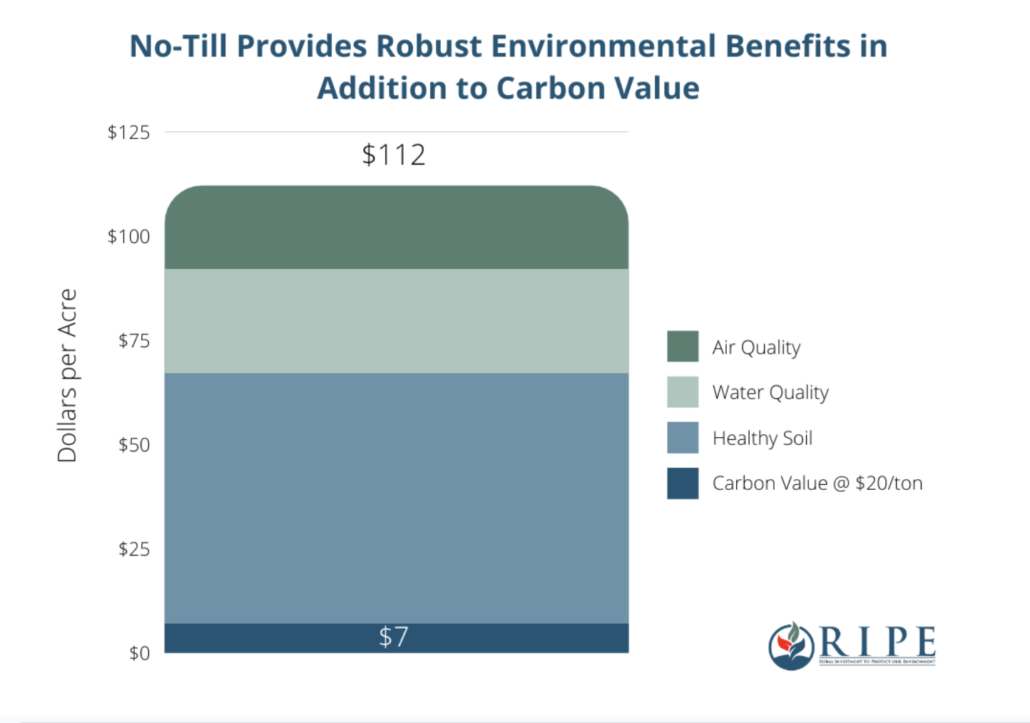A Closer Look at RIPE’s Qualifying Practices: Methodology and Sources for No-Till
We continually work to expand the set of qualifying practices outlined in the RIPE Proposal. Here we highlight no-till.

The practice reduces greenhouse gas emissions in the range of 0.1 to 0.7 metric tons per acre, but even at the higher end of the climate benefit, it is only worth around $14 per acre.
However, the practice also delivers $60 in soil quality benefits, $25 in water quality benefits, and $20 in air quality benefits per acre, reaching a total of $112 per acre.
Review our methodology and sources in the charts below and access our current list of proposed qualifying practices here.
No-Till
| Ecosystem Service | Dollars per acre per year | Citation |
|---|---|---|
| Carbon Sequestration | $7 | The 2018 “Economic Assessment for Ecosystem Service Market Credits From Agriculture on Working Lands,” report to the Ecosystem Services Market Consortium by Agribusiness Consulting indicates that the GHG value of no-till is $7/acre. On Page 15, it says that in 2017, 95,578,000 acres of field crops were already using no-till, and this reduces CO2e by 33,860,000 tonnes. This equals .35 t/acre, which when multiplied by $20/ton is $7/acre. Page 15 also cites 103 million acres of field crop area currently under conventional tillage could be converted to no-till, and this would reduce GHG emissions by another 37.5 million tonnes. This simplifies to .36t/acre, which also multiplies to $7/acre. |
| Air Quality | $20 | Pimentel et. al. “Environmental and Economic Costs of Soil Erosion and Conservation Benefits.” Science. Vol 267, Issue 5201, pages 1117-1123. 1995. Includes a table that compares different agricultural practices and their water runoff. |
| Healthy Soil | $60 | Soil nutrients: Pimentel et. al. “Environmental and Economic Costs of Soil Erosion and Conservation Benefits.” Science. Vol 267, Issue 5201, pages 1117-1123. 1995. Assumes a cost of $3 per ton of soil for nutrients. This was updated to 2020 dollars and used as a multiplier for values on no-till. Soil conservation: |
| Total | $112 |
